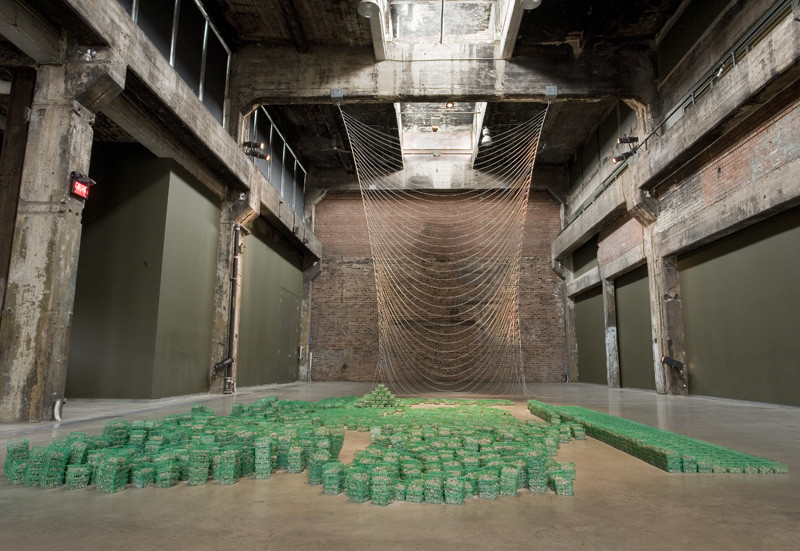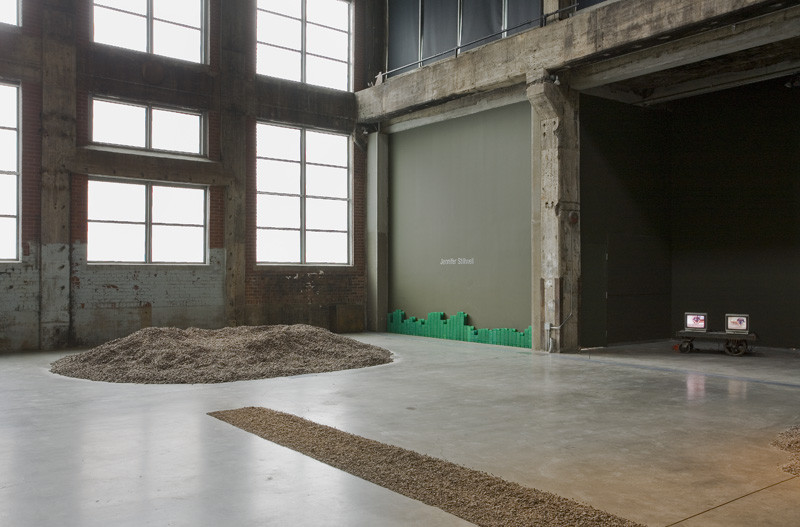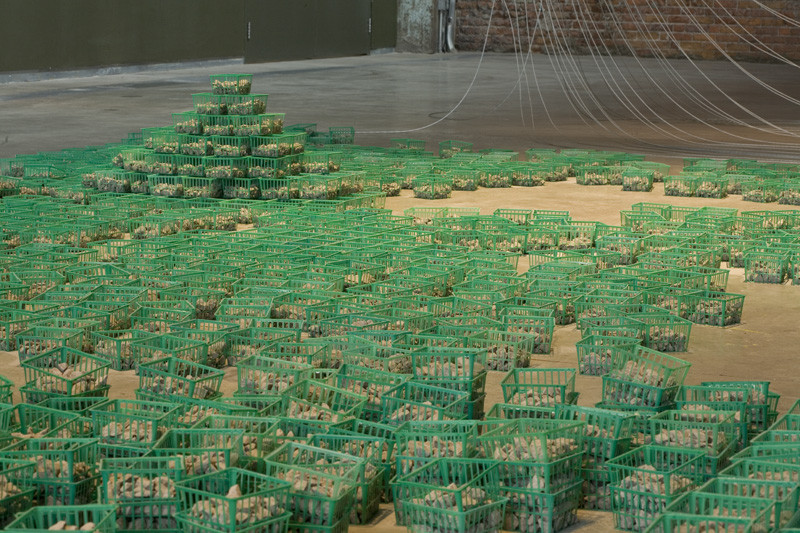


During her stay in Montreal in fall 2006, Winnipeg artist Jennifer Stillwell was impressed by the construction sites along McGill Street up to the road that leads to the Darling Foundry. Numerous obstacles made pedestrian access difficult: to move in this disordered environment became an experience in itself, reminiscent of certain conceptual works based on active participation of the spectator.
Inspired by this chaotic site, the artist presents in the large exhibition room of the Darling Foundry a reflection on the notions of space, time and architectural scale. Using these parameters as a starting point, she creates a work composed of gravel, small, green, plastic baskets and a metallic structure. Here, materials connected with industrial production are transformed and diverted to participate in reconfiguring the exhibition space: their juxtaposition produces a visual contrast between the raw nature of stone and the suppleness of plastic materials.
Construction site: time as component
At first sight, the installation seems like a construction site, reminiscent of a Land Art aesthetic, an abstract landscape unfolding in time and taking form in the exhibition space. Through an extended process, Stillwell develops her artistic proposition. Proceeding by trial and error the artist organizes and conserves various elements.
Surrounded by an extension cord, the gravel forms a heap, then small mounds, and a narrow band arrayed in a gentle slope. Filled with loose stones, the baskets placed on top of each other and side by side form patterns on the ground and represent a model of high-rise buildings or a series of computer components. For several days the artist concentrated on arranging the gravel and in the process sifting it. This rigorous method evokes assembly-line work, thus making reference to the Darling Foundry's industrial past.
The metal cables structure is left slack, contradicting its proper function with its architectural use. This soft form captures light, tracing ephemeral strokes on the ground.
The artist integrates a performative and documentary element in her installations through the video recording of the production stages. Throughout the exhibition four monitors present a montage of the various stages leading towards the creation of the final project, a way of unmasking and demystifying the artist's gesture and the small moments of a working environment.
Through a multiple reading this work engages the exhibition room in its spatial and temporal dimensions by overlapping raw landscape and architecture. The visitor walks around an organized construction site, where the components complete and respond to each other through the contrast of their material qualities: suppleness and rigidity, the perennial and the ephemeral.
Esther Bourdages
in collaboration with Fanny Franceschi
Winnipeg artist Jennifer Stillwell reflects on the notions of space, time and architectural scale. Things from everyday life are re-contextualized to reflect back on the exhibition space. Through the process of sifting a pile of gravel through produce baskets, she creates miniature landforms and extracts the content for a constructed civilization. The piece works with the scale of the space as it functions so the viewer can consider the relativity of their experience — a pile of gravel can be seen as a mountain when you move from one end of the space to the other and visually consider the forms as a whole. Her work also integrates videos that consider the process as both performative and documentary.
The artist thanks all the volunteers
Jennifer Stillwell
Jennifer Stillwell was born in 1972 in Winnipeg, Canada. She graduated from the School of the Art Institute of Chicago and the University of Manitoba in Winnipeg.
